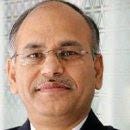What Logistics has in Store? — An Extract from the Last Mile Fulfillment Event
Logistics has always been an area of high interest to the bigger fishes of the industry. With Verizon taking over Fleetmatics and GE Transport acquiring ShipXpress, a lot of hustle happening in the logistics world. @dhruvilsanghvi along with other industry leaders like Suresh Bansal, P.C. Sharma, @Malay_Shankar , and @vaibhavdabhade came together to have a crucial panel discussion on the present day logistics. These panelist were brought together with the joint efforts of Franchise India and SingEx Exhibitions at LMF India.
Excerpts from the original article published by Apna Media
At A Crossroad
On 22–23 July, 2016, Franchise India and SingEx Exhibitions organised LMF (Last Mile Fulfilment) India 2016 at The Lalit, Mumbai. Apna Media was one of the event’s media partners.
As part of our event coverage, we bring to you exclusive excerpts of some of the panels— key learnings shared by chiefs of logistics and e-commerce companies at the conference. In this edition, we present the excerpts of a highly engaging panel discussion entitled“Transforming Traditional Logistics Business to eCommerce Fulfilment Business.” Panelists included Suresh Bansal, Director, DTDC Express; P.C. Sharma, CEO, TCI Express; Malay Shankar, Head, eCommerce Logistics, DIESL; Dhruvil Sanghvi, Co-founder and CEO, LogiNext Solutions; and Vaibhav Dabhade, Co-founder and CEO, Anchanto, Singapore.
Anshuman Maheshwary, Partner, A.T. Kearney, India moderated the discussion.
Customer is God. Cost is Key
![Anshuman Maheshwary [Moderator]](https://cdn-images-1.medium.com/max/130/0*n6O4BAS0k4tlKQ_X.)
Anshuman Maheshwary [Moderator]: To get a perspective about the ecommerce business in India, the e-retail business will grow to about $60 billion by 2020 but it will still be about 7 percent of India’s retail industry, and will still be as big as what China was 2013. On the bright side, it gives us some confidence of the growth that will actually materialize in the next few years. The key enabling factor of this growth will be logistics which will see 5–7 percent growth [CAGR] in this period as well, as per estimates. Which means e-commerce logistics in itself could potentially become a $5–6 billion segment over the next 5 years.
If you look at the mix of logistics service providers in the e-commerce segment, the e-commerce companies availing of in-house services form the largest group, following which we have the e-commerce specialists, and then we have the traditional logistics service providers. This question is to the panelists who come from the traditional service segment: How have you transformed your services to cater to the e-commerce industry?

Suresh Bansal, DTDC: As you know, DTDC has traditionally been a courier company for the last 26 years. We started as a document and parcel company, then we established an international network — all this was around traditional delivery of documents and parcels. When we saw the e-commerce opportunity, we looked at the best way to start because for 26 years we were doing business in a particular way.
The biggest challenge at a company like DTDC is different from most companies in the business because we have a very large franchise network in the country — so it is not a direct chain (of command) and the effort to change needed to be continuous. The challenge is that of bringing change to the organizational culture. We, at the board of directors were very clear that we needed to build change around four transformation pillars — B2C deliveries, B2B deliveries, cross-border international business, and e-fulfilment enablement. Around these four pillars, we wanted to build individual centres of excellence that would serve as a beacon of change for all the employees and franchise partners [DTDC comprises a family of 35,000 people
employees, franchisees and their associates. DTDC’s franchise network comprises 7,500-plus partners. — Editor].

P.C. Sharma, TCI Express: Our company started as a traditional company in 1958 and I joined the company in 1982. Over the years, I’ve found that two basic values have not changed in this company — one, customer is god, and two, optimize the cost. What has changed in the last few years is that everyone is talking about two things — customer experience and visibility.
When I joined around 30 years ago, we used to book shipments which could reach in 15 days or one month and people would be comfortable with the speed. Now, even before the shipment is booked, people ask us: where is the shipment? So the visibility part has become very important. We have risen to the challenge by mapping the customers’ needs and by focusing on talent within the organization.
Coming to e-commerce, the question of meeting profitability [targets] is a big challenge therefore we are very choosy with our assignments.
Anshuman: Malay, nearly 15–20 percent of e-commerce business in the next five years will come from tier-2, tier-3 and rural areas. Do you see it as an advantage for your organization as compared to e-commerce specialists?

Malay Shankar, DIESL: The question boils down to whether it is good to become a specialist or a generalist in the e-commerce logistics business. Ours has been traditionally a 3PL organisation where we are present in the areas of warehousing and distribution. Over the years, our experience has primarily been in consumer durables business where we mostly deal with goods such as white goods that are weighed above 30 kg. The amount of focus on customer experience that e-commerce companies require from service providers is phenomenal. While most of the e-commerce service providers are good with doorstep deliveries, we are better adept at delivering larger products that have to be carried into the household. Due to this reason, we see a lot of e-commerce companies dealing in heavier goods such as furniture and white goods coming to us.
Anshuman: Dhruvil, it’s interesting that we never had access to so much data as we do today, which is leading to new developments in technologies. How critical is deployment of new technologies as a competitive advantage for newer service producers?

Dhruvil Sanghvi, LogiNext Solutions: You rightly identified that data is the next differentiator. I see that technology deployment has evolved in India’s logistics industry in two stages. The first stage was the one that saw the deployment of WMS and TMS and other solutions that brought a basic level of automation to organisations. The next level, where we are at currently, has been that of tech solutions such as big data, location intelligence, consumer analytics, etc.
At the current level — the biggest challenge that I see comes from data aggregation. Now we have tech solutions that can collect data from multiple sources and impact the basics, that is, the aspects of customer service and cost. So how do you leverage the data aggregation tools to optimize the two fundamental aspects of customer experience and cost? That’s where a lot of companies went wrong last year where their only focus was customer experience. But they did not focus on cost or the other way around (companies that focused on cost did not focus on customer experience).
Those solutions that can enable both customer experience and cost will be the winners. Especially in the last mile. There is a bunch of tech solutions in the areas of real-time routing, tracking, analytics and so on, that are coming up. What we typically see is that a lot of global players are tweaking these solutions for emerging markets like India — this is a sign that these solutions are the ones to watch out for.
We started LogiNext in the US in late-2013; it turned out there is a bigger wave in India going on in this space. That’s where we moved to India. True, there are a lot of challenges here, such as the unorganized way in which some of these markets work, starting from geo-coding where converting an address into pair of latitude and longitude coordinates becomes a challenge. That is, creating a mapping solution which is accurate in terms of geo-coding. However, a good ecosystem is evolving and we are now focusing on tier-2, tier -3 cities in India. Once you track the basics in India, you can take it anywhere in the world.
Anshuman: Perhaps you can use Pokemon Go as a way to do the mapping for you.
Dhruvil: Actually, that’s a great idea.
Anshuman: Vaibhav, since you do a lot of enablement (of technology), how are you seeing the uptake of technologies as far as traditional logistics service providers are concerned who have already invested in traditional ware?

Vaibhav Dabhade, Anchanto: An honest answer is, that it (the scene) is pretty bad. It is generally an organizational inertia that most of the companies have had for a long period of time. They are not willing to go outside the comfort zone. There is too much focus on the bottom-line and the top-line which keeps them there.
As an example, if you see in the late nineteenth century, there was a huge ice harvesting industry. And the whole focus of that industry was to build a better ice-storage facility to use that ice during the summers. Then somebody made a compressor that could create ice in a factory, and within eight years the entire ice-harvesting industry got down to zero.
Thereon more and more investment went into making bigger and bigger compressors, creating ice factories, but nobody thought about what will happen when somebody makes a small compressor. Then somebody made a small refrigerator with a compressor, that went on to kill the ice-factory industry. The logistics industry today stands at a similar crossroad.
The uptake, if you ask me, will be firmly with companies which are willing to go outside the comfort zone. Who have an extremely good clarity of the purpose — they have very clear idea that they need to create something separate outside without the influence of their organizations’ existing inertia, who know that they require the resources not for today but for tomorrow.
Courtesy : Apna Media








@LogiNext